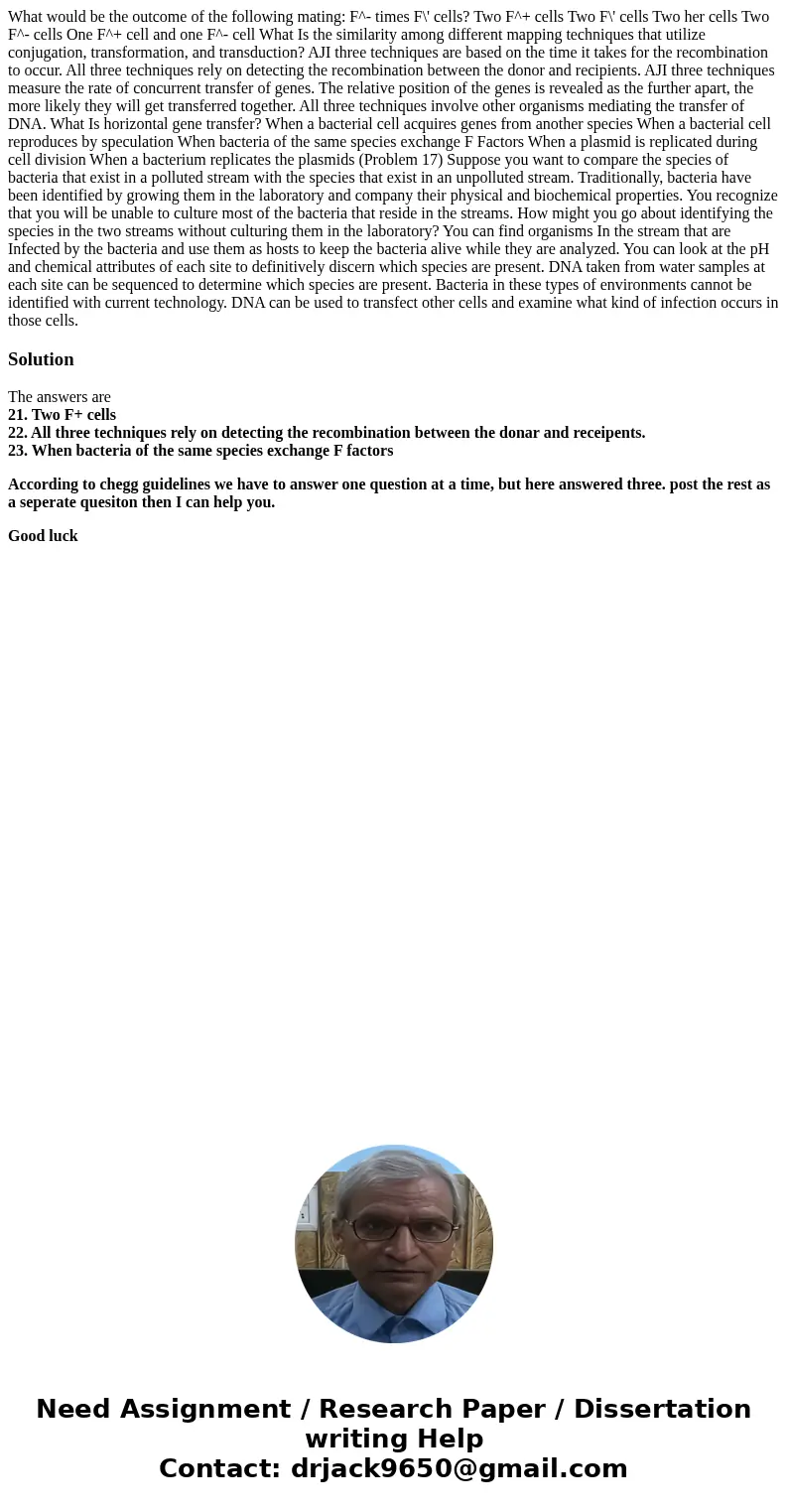What would be the outcome of the following mating F times F
What would be the outcome of the following mating: F^- times F\' cells? Two F^+ cells Two F\' cells Two her cells Two F^- cells One F^+ cell and one F^- cell What Is the similarity among different mapping techniques that utilize conjugation, transformation, and transduction? AJI three techniques are based on the time it takes for the recombination to occur. All three techniques rely on detecting the recombination between the donor and recipients. AJI three techniques measure the rate of concurrent transfer of genes. The relative position of the genes is revealed as the further apart, the more likely they will get transferred together. All three techniques involve other organisms mediating the transfer of DNA. What Is horizontal gene transfer? When a bacterial cell acquires genes from another species When a bacterial cell reproduces by speculation When bacteria of the same species exchange F Factors When a plasmid is replicated during cell division When a bacterium replicates the plasmids (Problem 17) Suppose you want to compare the species of bacteria that exist in a polluted stream with the species that exist in an unpolluted stream. Traditionally, bacteria have been identified by growing them in the laboratory and company their physical and biochemical properties. You recognize that you will be unable to culture most of the bacteria that reside in the streams. How might you go about identifying the species in the two streams without culturing them in the laboratory? You can find organisms In the stream that are Infected by the bacteria and use them as hosts to keep the bacteria alive while they are analyzed. You can look at the pH and chemical attributes of each site to definitively discern which species are present. DNA taken from water samples at each site can be sequenced to determine which species are present. Bacteria in these types of environments cannot be identified with current technology. DNA can be used to transfect other cells and examine what kind of infection occurs in those cells.
Solution
The answers are
21. Two F+ cells
22. All three techniques rely on detecting the recombination between the donar and receipents.
23. When bacteria of the same species exchange F factors
According to chegg guidelines we have to answer one question at a time, but here answered three. post the rest as a seperate quesiton then I can help you.
Good luck

 Homework Sourse
Homework Sourse